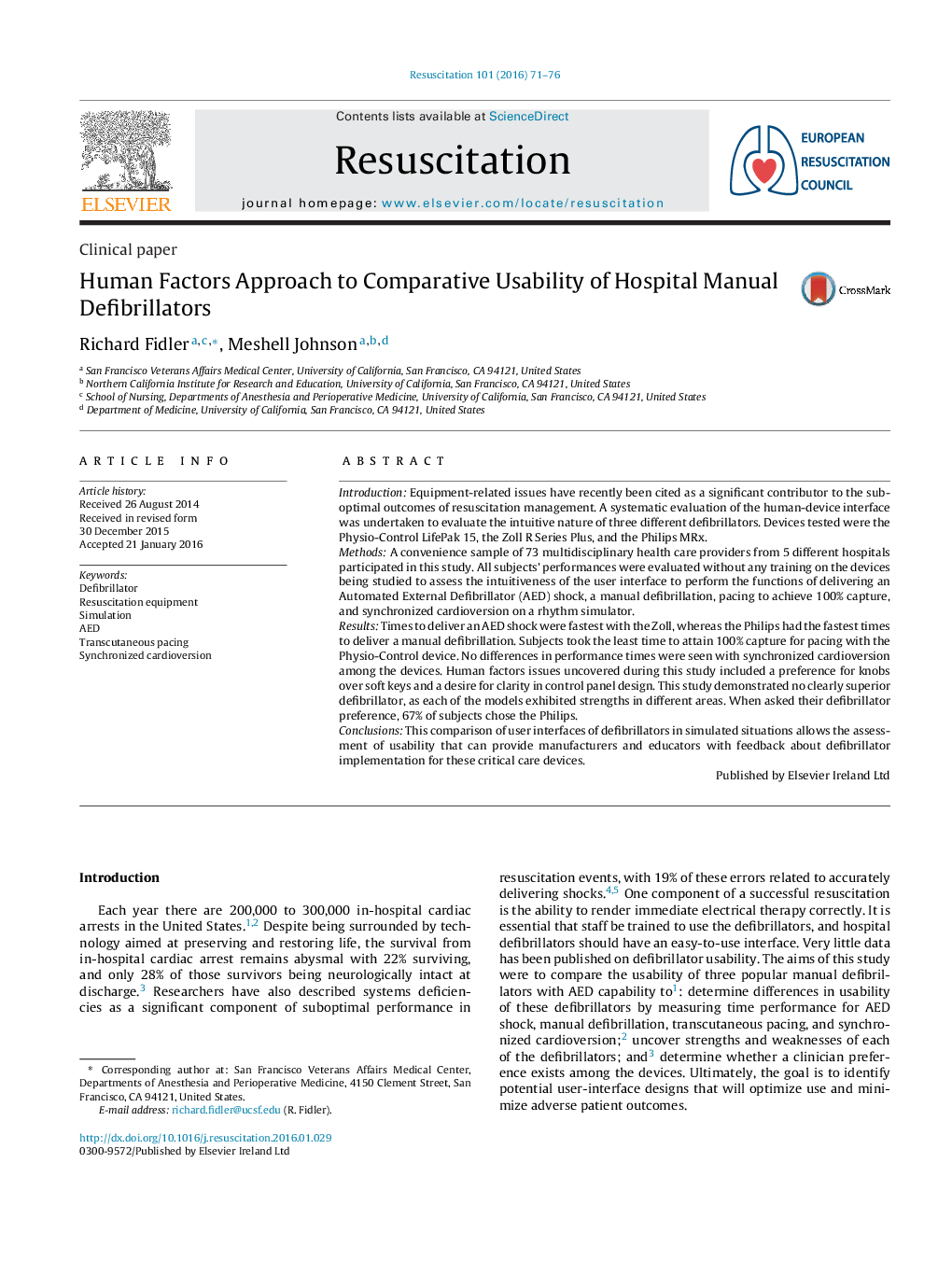| Article ID | Journal | Published Year | Pages | File Type |
|---|---|---|---|---|
| 5997607 | Resuscitation | 2016 | 6 Pages |
IntroductionEquipment-related issues have recently been cited as a significant contributor to the suboptimal outcomes of resuscitation management. A systematic evaluation of the human-device interface was undertaken to evaluate the intuitive nature of three different defibrillators. Devices tested were the Physio-Control LifePak 15, the Zoll R Series Plus, and the Philips MRx.MethodsA convenience sample of 73 multidisciplinary health care providers from 5 different hospitals participated in this study. All subjects' performances were evaluated without any training on the devices being studied to assess the intuitiveness of the user interface to perform the functions of delivering an Automated External Defibrillator (AED) shock, a manual defibrillation, pacing to achieve 100% capture, and synchronized cardioversion on a rhythm simulator.ResultsTimes to deliver an AED shock were fastest with the Zoll, whereas the Philips had the fastest times to deliver a manual defibrillation. Subjects took the least time to attain 100% capture for pacing with the Physio-Control device. No differences in performance times were seen with synchronized cardioversion among the devices. Human factors issues uncovered during this study included a preference for knobs over soft keys and a desire for clarity in control panel design. This study demonstrated no clearly superior defibrillator, as each of the models exhibited strengths in different areas. When asked their defibrillator preference, 67% of subjects chose the Philips.ConclusionsThis comparison of user interfaces of defibrillators in simulated situations allows the assessment of usability that can provide manufacturers and educators with feedback about defibrillator implementation for these critical care devices.
